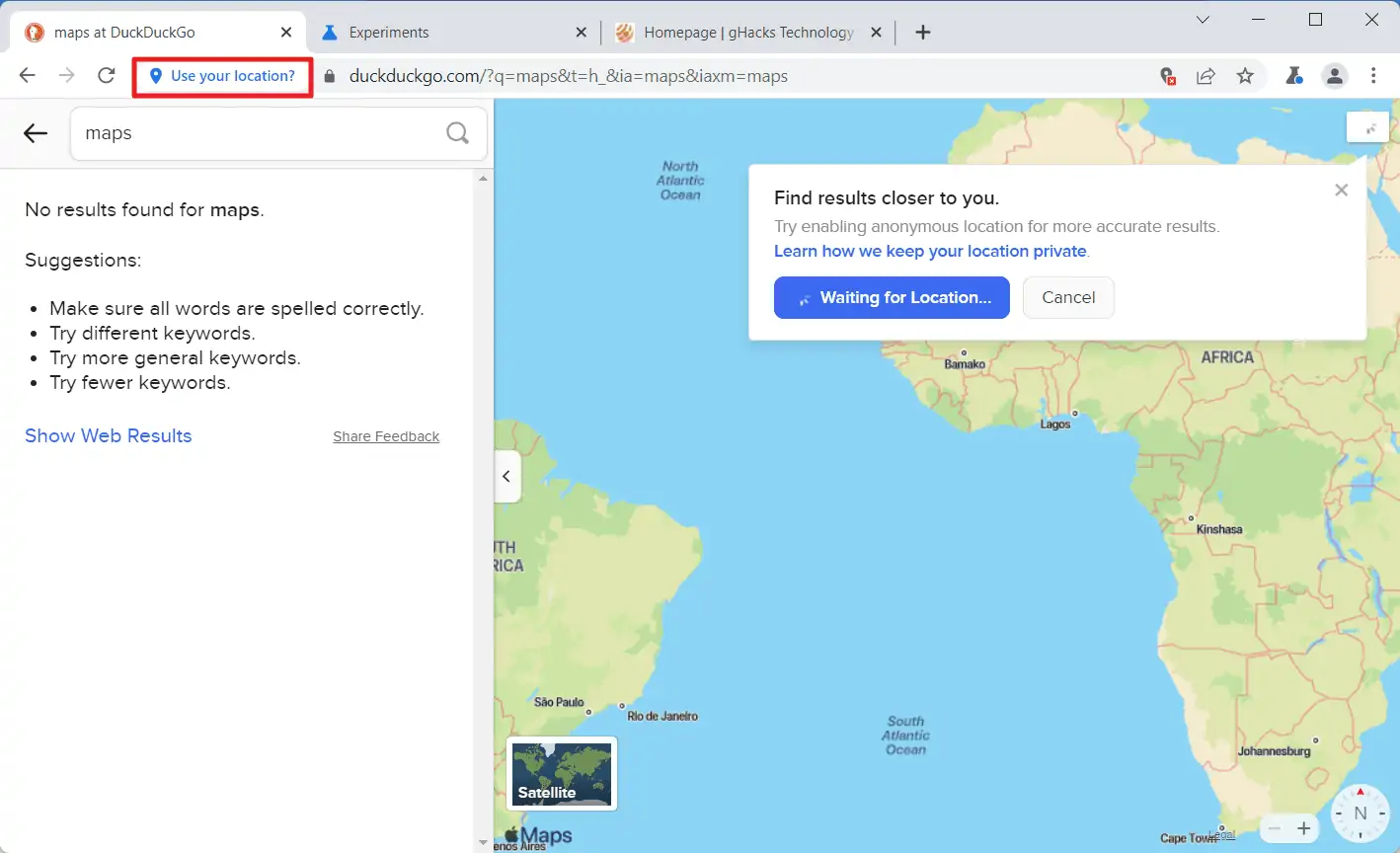Google announced plans to make permission prompts in the company's Chrome web browser less annoying in February 2022.

When a Chrome user opens a site on the Internet that requests a permission, e.g., a maps service requesting the location permission, Chrome displays a large prompt in the top left corner. The prompt remains visible on the page until the user interacts with it, reloads the page or navigates away. The permission prompt has block and allow buttons, and an option to close it.
Google engineers looked at telemetry data recently to better understand how users interacted with these prompts. According to that data, permission prompts are either ignored or dismissed by an average of 85% of users. An additional 9% of users selects the block option to prevent the site from displaying prompts in the future; this leaves less than 7% of all users who select allow as the action.
The prompts stand out and insist that users make a decision, as they remain visible if the user chooses to ignore the prompt completely. The urgency of the prompt and the low number of users that interact positively with the prompts gave Google a reason to look for an alternative.
Starting in Chrome 98, Google users will see an animated chip UI in the browser's address bar when a site requests a permission. It displays an icon and the name of the permission that the site requests, and users may click on it to display the full prompt that allows them to allow access to the function that is requested or block it.
The request chip that Chrome displays will collapse to a blocked icon automatically after a short time to indicate that the permission is temporarily blocked. Chrome displays a blocked icon for several seconds before displaying just the site's lock icon again.

There are exceptions to the default behavior (there are always exceptions, are not there?):
- Chrome displays the full prompt for permissions that it deems "essential" and considers to be "generally not spammy". The permissions are camera, microphone, and camera paired with microphone.
- Chrome displays the full prompt if the permission was triggered "through a user gesture when interacting with the site itself".
Enable the feature now
Google rolls out the new functionality to all Chrome users over time. Chrome users who want to enable it right away can do so by enabling the following flags:
- chrome://flags/#permission-chip
- chrome://flags/#permission-chip-gesture
- chrome://flags/#permission-chip-request-type
A restart is required before the changes are visible in the browser.
Closing Words
The change improves the user experience in Chrome, as permission prompts are no longer displayed on the screen until the user interacts with them. Some sites may see permission interaction stats going down. Google announced that it may enable a more aggressive auto-blocking behavior in the Chrome browser in the future.
- aum
-

 1
1



3175x175(CURRENT).thumb.jpg.b05acc060982b36f5891ba728e6d953c.jpg)
Recommended Comments
There are no comments to display.
Join the conversation
You can post now and register later. If you have an account, sign in now to post with your account.
Note: Your post will require moderator approval before it will be visible.